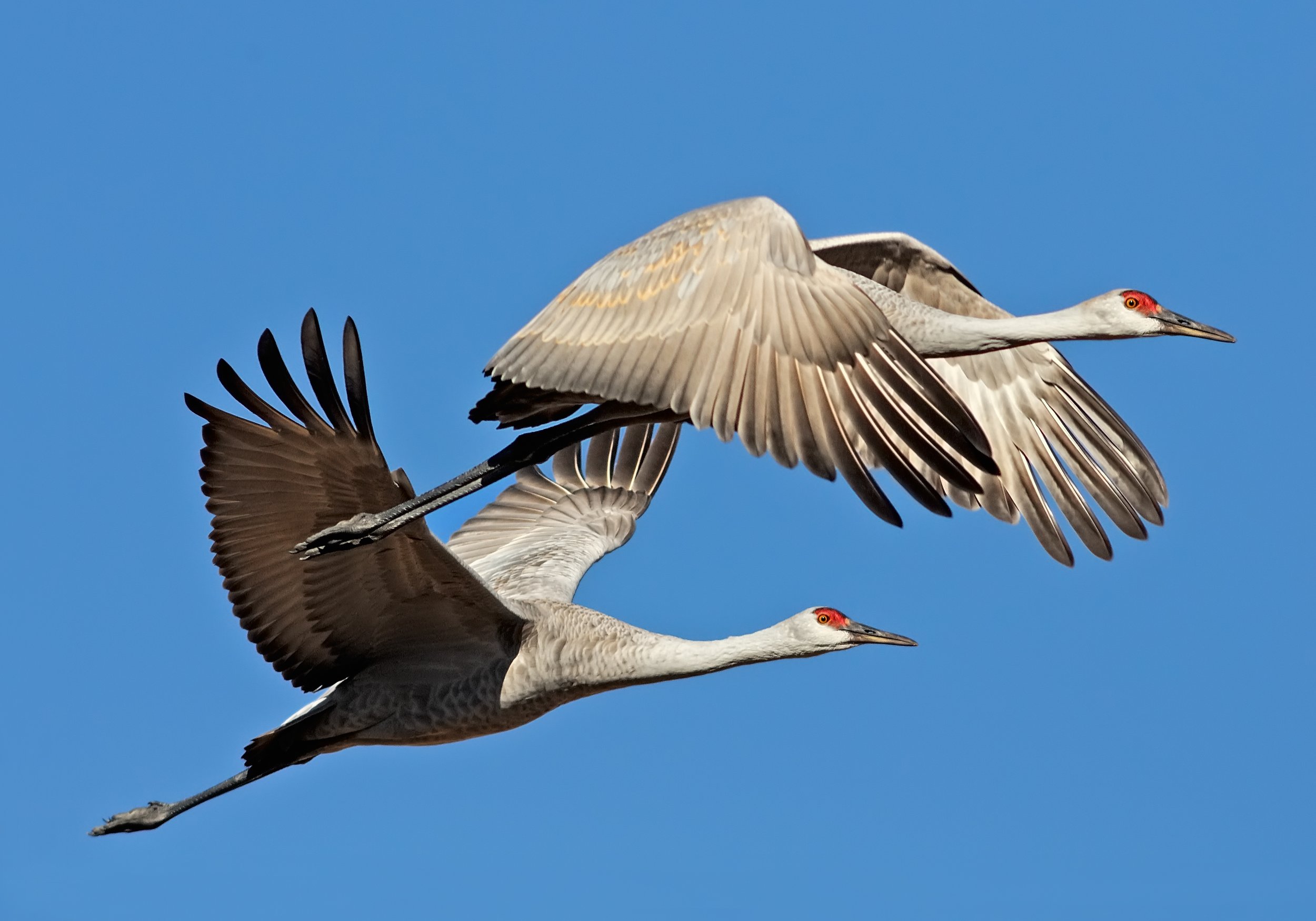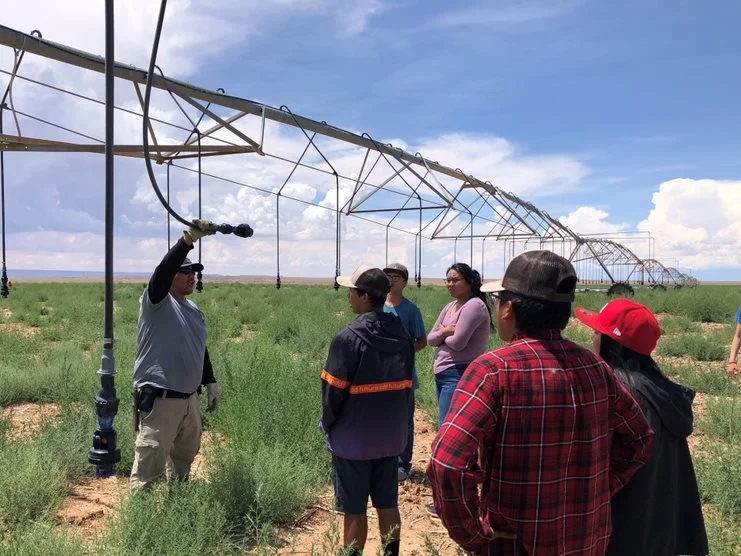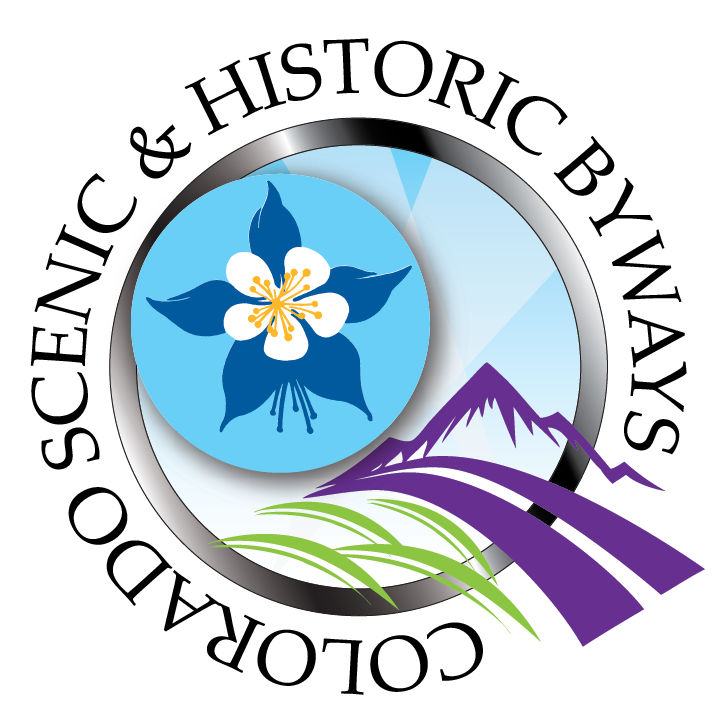Stories: From the Field
Conservation is multi-faceted, taking many forms and offering diverse benefits to the people who live in and visit the great state of Colorado. Our coalition members are leading the conservation of private lands in Colorado - with public benefits ranging from local food access and clean water; to healthy habitats for fish, animals and birds; to beautifully maintained trails and open spaces and opportunities to connect with nature and landscapes; and preservation of a unique Colorado heritage and way of life for ranchers, farmers and families for whom Colorado is their ancestral home.
All things that make Colorado special. And all things that conservation addresses!
Read contributed stories from our coalition members here.
In December 2020, the Southern Plains Land Trust began a brand-new conservation bison herd with ten American plains bison (hence Bison bison bison) on the shortgrass prairie of southeastern Colorado. The land trust also added another ten bison that went to its sanctuary herd. Now, you may be wondering, why do they have two separate herds? Why not keep them together? To answer that question, we must go back in time to fully understand the complexity of the answer.
The Mt. Harris ranch is nestled in 17,000 acres of conserved land within Routt County, Colorado. Just 18 miles west of Steamboat Springs and bordered by the Yampa River, the ranch is an outstanding wildlife habitat. Greater Sandhill Cranes and bald eagles forage here. Both are species of Special Concern, and preserving freshwater wetlands, including marshes, wet grasslands and river basins for these birds ensures their survival.
The La Jara Cañon Creek ranch in Capulin, Colorado has 840 acres of working ranchlands and provides public fishing access to local residents, many of whom are underserved or low-income community members. The creek is a gold medal fishing spot, especially for brown trout. Like most fish, the brown trout cannot regulate body temperature, so they need cold waters to survive. The cold waters of La Jara Creek furnish a perfect home for the "brownies."
Located on the Uncompaghre Plateau, this ranch was slated to be sub-divided. Today, it hosts prime elk habitat with picturesque meadows, abundant forage, and thousands of acres of national forest along its borders…and the owner is looking to keep it that way.
The signs along the county road make it clear: no weed spraying is allowed near the property. This is a slice of pollinator paradise. Wedged between expansive farm fields near Bayfield, Marikay Shellman’s 40-acre property is a lush haven of willow and fruit trees where a variety of birds, insects, and plants enjoy the leafy protection.
Finding a solution between sustainable recreation and conservation is not an easy task and compromise is often necessary.
Northwest of Glen Haven in the Estes Valley, the Cheley Colorado Camp's boys' overnight camp sits in a scenic outdoor wonderland. During the summer months kids enjoy educational activities here, and hike along backcountry trails as they take in undisturbed views of Rocky Mountain National Park.
The La Jara Cañon Creek ranch in Capulin, Colorado has 840 acres of working ranchlands and provides public fishing access to local residents, many of whom are underserved or low-income community members. The creek is a gold medal fishing spot, especially for brown trout. Like most fish, the brown trout cannot regulate body temperature, so they need cold waters to survive. The cold waters of La Jara Creek furnish a perfect home for the "brownies."
Trail openings mark the perennial changing of the tools: skis to bikes, boots to sandals, beanie to sunhat. Local wildlife partakes as well: deer and elk populations are slowly beginning their transitions from the valleys towards the alpine. Yet today is in fact quite different.
Conservation has well-known ecological benefits – but the positive impacts on Colorado’s economy are also very real. Long Lake in Crested Butte was slated to be auctioned off, and saving it saved a local gem, leading to benefits the community can count on.
What has private lands conservation done for you lately? If you've been to Grand Junction, you might know the Lunch Loop Trailhead. Its redesign has provided several benefits – some obvious, others unexpected! – for the local community.
Finding a solution between sustainable recreation and conservation is not an easy task and compromise is often necessary.
If trail use and community generosity are any indication, open space along the Monument Corridor is one of the Grand Valley’s most appreciated assets.
Like most teenagers, the students from Southwest Open School who joined Montezuma Land Conservancy’s Agriculture Immersion Program had given the drought very little thought. Before the program began, many were unaware of the challenging conditions facing local farmers, ranchers, and water managers. At best, drought seemed very abstract. But after working at MLC’s education and research center at Fozzie’s Farm, it got real in a hurry!
The cows at James Ranch have a view a real estate agent would love to sell: verdant fields unfold along the Animas River against a backdrop of snow-capped San Juan Mountains. Is it at risk of succumbing to development? Not anymore.
A rare opportunity presents a win-win-win solution to western water shortages - bolstering an agricultural economy, ensuring water security and achieving significant conservation victories in a threatened landscape.
In conservation, things rarely go according to plan. When Montezuma Land Conservancy first devised the Agriculture Immersion Program for youth, the goal was to provide hands-on farm and ranch experiences at Fozzie’s Farm.
Like most teenagers, the students from Southwest Open School who joined Montezuma Land Conservancy’s Agriculture Immersion Program had given the drought very little thought. Before the program began, many were unaware of the challenging conditions facing local farmers, ranchers, and water managers. At best, drought seemed very abstract. But after working at MLC’s education and research center at Fozzie’s Farm, it got real in a hurry!
Conservation has well-known ecological benefits – but the positive impacts on Colorado’s economy are also very real. Long Lake in Crested Butte was slated to be auctioned off, and saving it saved a local gem, leading to benefits the community can count on.
A rare opportunity presents a win-win-win solution to western water shortages - bolstering an agricultural economy, ensuring water security and achieving significant conservation victories in a threatened landscape.
Finding a solution between sustainable recreation and conservation is not an easy task and compromise is often necessary.
The signs along the county road make it clear: no weed spraying is allowed near the property. This is a slice of pollinator paradise. Wedged between expansive farm fields near Bayfield, Marikay Shellman’s 40-acre property is a lush haven of willow and fruit trees where a variety of birds, insects, and plants enjoy the leafy protection.
The cows at James Ranch have a view a real estate agent would love to sell: verdant fields unfold along the Animas River against a backdrop of snow-capped San Juan Mountains. Is it at risk of succumbing to development? Not anymore.
There is no word for "conservation" in the Ute language. But protecting lands and waters, accepting their gifts, and giving back to them are values that are built into the Ute culture and way of life. These were a few themes at Connecting Land and Community through Our Stories, where people from different communities shared how they relate to nature, and what connecting to the natural world means to us individually and collectively.
Trail openings mark the perennial changing of the tools: skis to bikes, boots to sandals, beanie to sunhat. Local wildlife partakes as well: deer and elk populations are slowly beginning their transitions from the valleys towards the alpine. Yet today is in fact quite different.
Conservation has well-known ecological benefits – but the positive impacts on Colorado’s economy are also very real. Long Lake in Crested Butte was slated to be auctioned off, and saving it saved a local gem, leading to benefits the community can count on.
What has private lands conservation done for you lately? If you've been to Grand Junction, you might know the Lunch Loop Trailhead. Its redesign has provided several benefits – some obvious, others unexpected! – for the local community.
A rare opportunity presents a win-win-win solution to western water shortages - bolstering an agricultural economy, ensuring water security and achieving significant conservation victories in a threatened landscape.
Finding a solution between sustainable recreation and conservation is not an easy task and compromise is often necessary.
If trail use and community generosity are any indication, open space along the Monument Corridor is one of the Grand Valley’s most appreciated assets.
In conservation, things rarely go according to plan. When Montezuma Land Conservancy first devised the Agriculture Immersion Program for youth, the goal was to provide hands-on farm and ranch experiences at Fozzie’s Farm.
There is no word for "conservation" in the Ute language. But protecting lands and waters, accepting their gifts, and giving back to them are values that are built into the Ute culture and way of life. These were a few themes at Connecting Land and Community through Our Stories, where people from different communities shared how they relate to nature, and what connecting to the natural world means to us individually and collectively.
At Aspaas Ranch, wildlife and plants thrive along the river and the spring-fed ponds - and this old homestead has an historic value that’s now protected.




























